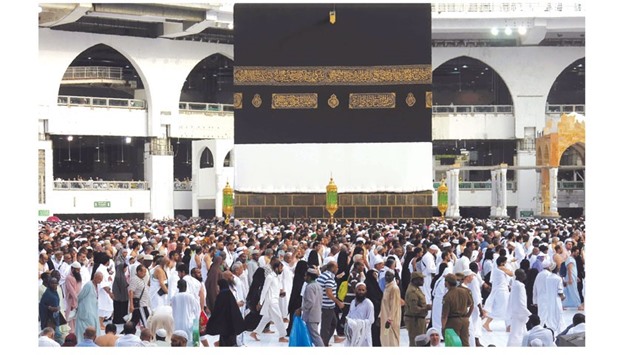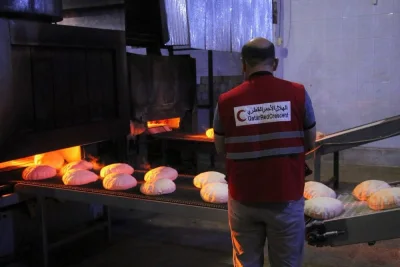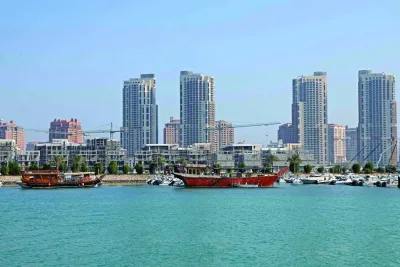Construction projects to expand capacity at Makkah’s Grand Mosque and other Islamic holy sites will be completed in about three years, enabling Saudi Arabia to accommodate more pilgrims, Makkah’s mayor said yesterday.
Osama bin Fadl al-Bar said the pilgrimage-related projects were a top state priority and would be finished on time, despite widespread delays in the Saudi construction sector as the kingdom grapples with the effects of sustained low oil prices.
“All of these projects are being developed to serve our guests and accommodate more of them,” said al-Bar, dressed in traditional robes and seated on a plush green leather sofa during an interview at his office in Makkah’s municipal building.
The projects will be completed by 2020, he said.
The new King Abdulaziz International Airport and the Grand Mosque expansion will both be finished in either 2017 or 2018.
Haramain, a high-speed railway linking the holy cities of Makkah and Madinah, will be completed in late 2016 and will undergo testing before opening to the public in 2017.
A final project, a 4km tunnel and two metro stations that will form part of the planned $16.5bn Makkah metro project, will be completed in 2020.
The work comes on top of recent expansion and construction including dozens of new hotels, the world’s biggest clock tower looming over the Grand Mosque, and expanded access routes across Makkah which have cost many billions of dollars.
The issue of capacity in Makkah has resurfaced following last year’s Haj disaster, when a crush in the Mina tent city area killed hundreds of pilgrims.
Bar said the impact of the work was mitigated by a decrease in the number of pilgrims coming to Makkah for this year’s Haj, which started yesterday.
“The negative impact is minor given the (decreased) number of Haj pilgrims, although on the other hand there is also an increase in the number of Umrah pilgrims arriving each year,” he said.
Whereas in previous years, up to 3mn people have flocked to the holy city for Haj, this year authorities were anticipating no more than 2mn Haj pilgrims.
Saudi authorities have undertaken enormous mega-projects to accommodate the increasing influx of people seeking to make the pilgrimage to Makkah, which all Muslims who can afford to are required to do at least once.
Saudi Arabia announced plans in June to increase the number of Umrah pilgrims coming from abroad from 6mn in recent years to 15mn by 2020.
Al-Bar estimated that 12mn people from abroad were already expected this year for Umrah, which can be performed at any time of year.
The kingdom has also set a goal of boosting religious tourism as part of its long-term plan to diversify the economy beyond oil, giving it financial incentive to welcome a greater number of pilgrims.
The total cost of the expansion work, including both land and infrastructure, was about $100bn, said al-Bar.
After the work is finished, the Grand Mosque will have a total capacity of 2.2mn worshippers, up from 600,000 currently.
Up to 400,000 people per hour will be able to circumambulate the sacred Kaaba at the centre of the mosque, said Bar.
The Jamarat bridge, where pilgrims throw stones at pillars symbolising the devil, will handle up to 500,000 pilgrims at a time, or 3mn total over the course of each Haj.

A general view of Muslim pilgrims from all around the world circling around the Kaaba at the Grand Mosque, in the Saudi city of Makkah.


